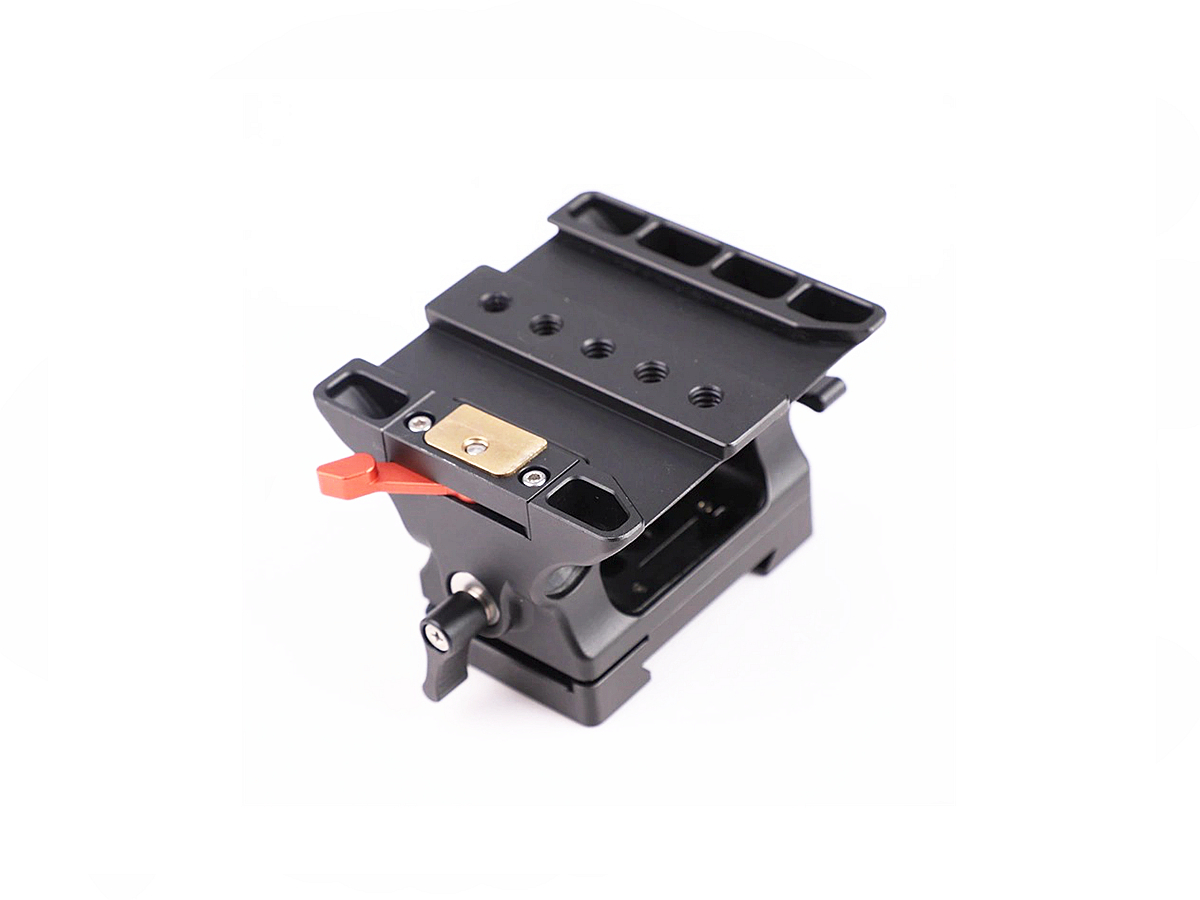Your One-Stop Shop for Aluminum CNC Machining: Lightweight, Durable Parts
Introduction
Your one-stop shop for aluminum CNC machining offers a reliable, precise, and cost-effective solution for manufacturing lightweight, durable parts suitable for a wide range of industries. Aluminum alloys such as 6061, 7075, and 2024 are highly favored for their excellent strength-to-weight ratio, corrosion resistance, and machinability. By utilizing Aluminum CNC Machining, manufacturers can produce high-quality aluminum components that meet demanding specifications, making them ideal for industries like aerospace, automotive, and consumer products.
With the ability to handle rapid prototyping and large-scale production, Mass Production CNC Machining ensures fast, efficient, and high-precision aluminum parts manufacturing. This one-stop solution streamlines production, reduces lead times, and minimizes errors, ultimately providing durable and reliable parts for various applications.
Aluminum Material Properties
Material Performance Comparison Table
Aluminum Alloy | Tensile Strength (MPa) | Yield Strength (MPa) | Hardness (HRC) | Density (g/cm³) | Applications | Advantages |
|---|---|---|---|---|---|---|
240–310 | 205–275 | 25–35 | 2.70 | Aerospace, automotive parts, frames | Excellent corrosion resistance, good weldability | |
500–570 | 430–505 | 38–45 | 2.81 | Aircraft, military, high-strength components | Exceptional strength, excellent fatigue resistance | |
430–490 | 350–460 | 30–40 | 2.78 | Aerospace, structural applications | High strength-to-weight ratio, good fatigue resistance | |
230–290 | 160–275 | 20–35 | 2.68 | Marine, chemical processing | Excellent corrosion resistance, good formability |
Selecting the Right Aluminum Alloy for CNC Machining
The choice of aluminum alloy significantly impacts the machined parts' performance, strength, and durability. The right alloy should meet specific requirements based on the application:
6061 Aluminum: Ideal for general-purpose applications such as aerospace frames, automotive parts, and structural components due to its good corrosion resistance and weldability.
7075 Aluminum: Recommended for high-strength applications such as aircraft and military components, where exceptional strength and fatigue resistance are critical.
2024 Aluminum: Best suited for aerospace and structural applications that require a high strength-to-weight ratio and good fatigue resistance, especially in parts exposed to dynamic loads.
5052 Aluminum: Excellent for parts exposed to marine environments or chemical processing, providing superior corrosion resistance and good formability.
CNC Machining Processes for Aluminum Parts
CNC Process Comparison Table
CNC Machining Process | Accuracy (mm) | Surface Finish (Ra µm) | Typical Uses | Advantages |
|---|---|---|---|---|
±0.005 | 0.4–1.6 | Aerospace, automotive parts | High precision for complex shapes | |
±0.005 | 0.4–1.0 | Shafts, pins, cylindrical parts | Consistent surface finishes, high accuracy | |
±0.01 | 0.8–3.2 | Holes, threaded components | Fast, precise hole-making | |
±0.003 | 0.2–1.0 | Complex aluminum parts | High precision, multi-directional machining |
CNC Process Selection Strategy
Selecting the right CNC machining process for aluminum parts depends on the part’s complexity, required precision, and surface finish needs:
CNC Milling: Ideal for creating complex geometries and intricate aluminum parts such as engine components, aerospace parts, and structural frames. Provides high precision (±0.005 mm) and versatility in machining complex shapes.
CNC Turning: Perfect for cylindrical aluminum components such as shafts, pins, and connectors. Ensures high consistency and accuracy (±0.005 mm), along with smooth surface finishes (Ra ≤1.0 µm).
CNC Drilling: Suitable for creating precise holes, threads, and fastener holes in aluminum parts, offering fast turnaround and high accuracy (±0.01 mm).
Multi-Axis Machining: Best for machining highly complex and custom-shaped aluminum parts, offering superior precision (±0.003 mm) and reducing the number of production steps.
Surface Treatments for Aluminum Parts
Surface Treatment Comparison Table
Treatment Method | Surface Roughness (Ra µm) | Corrosion Resistance | Max Temp (°C) | Applications | Key Features |
|---|---|---|---|---|---|
≤1.0 | Excellent | 200 | Aerospace, automotive parts | Enhanced corrosion resistance, improved wear resistance | |
≤2.0 | Excellent | 250 | Consumer products, outdoor components | Durable, weather-resistant, aesthetic finishes | |
≤1.0 | Excellent | 450 | Aerospace, high-performance parts | Increased hardness, wear resistance | |
≤1.0 | Excellent | 250 | Food processing, medical devices | Improved corrosion resistance, extended lifespan |
Surface Treatment Selection Strategy
Surface treatments are essential to improving the durability, corrosion resistance, and overall performance of aluminum parts used in demanding applications:
Anodizing: Best for aerospace and automotive components, anodizing provides enhanced corrosion resistance, increased wear resistance, and an aesthetically pleasing finish, ideal for parts exposed to harsh conditions.
Powder Coating: Suitable for consumer products and outdoor components, powder coating offers a durable, weather-resistant finish that maintains its integrity even in tough environments.
PVD Coating: Ideal for high-performance aerospace parts, providing increased hardness, wear resistance, and excellent protection against oxidation.
Passivation: Recommended for food processing and medical devices, passivation improves corrosion resistance, ensuring longevity and safe use in demanding environments.
Typical Aluminum Rapid Prototyping Methods
Effective prototyping methods for aluminum components include:
CNC Machining Prototyping: Provides fast, high-precision production of aluminum parts in small batches for testing and iteration.
Aluminum 3D Printing: Ideal for rapid prototyping of complex aluminum parts and design iterations, enabling quick changes before full-scale production.
Rapid Molding Prototyping: Cost-effective for creating moderately complex aluminum parts before transitioning to full production.
Quality Assurance Procedures
Dimensional Inspection: ±0.002 mm accuracy (ISO 10360-2).
Material Verification: ASTM B221, ASTM B209 standards for aluminum alloys.
Surface Finish Assessment: ISO 4287.
Mechanical Testing: ASTM E8 for tensile and yield strength.
Visual Inspection: ISO 2768 standards.
ISO 9001 Quality Management System: Ensuring consistent quality and performance.
Key Applications
Aerospace: Aircraft frames, landing gear components, engine parts.
Automotive: Engine parts, chassis, suspension components.
Consumer Products: Enclosures, housings, casings.
Industrial Equipment: Pumps, valves, industrial machinery parts.
Related FAQs:
Why is aluminum CNC machining ideal for automotive and aerospace applications?
What are the best aluminum alloys for CNC machining in high-performance industries?
How do surface treatments improve the performance of aluminum parts?
What are the advantages of mass production CNC machining for aluminum parts?
How does low-volume CNC machining support prototyping for aluminum components?

